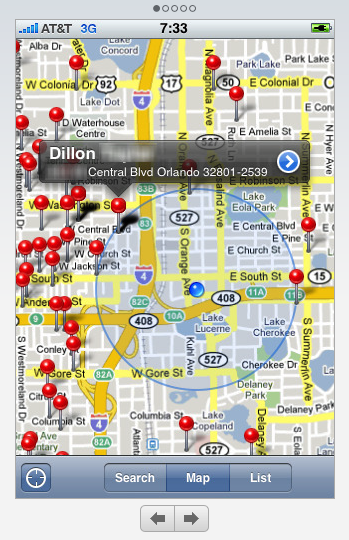Dan retells his three-year-old story with a robotic frankness and honesty derived from telling it countless times before. If he’s angry, embarrassed or bitter, his tone doesn’t betray him. It’s as if he has the tale memorized, and, after relating it to a judge, psychologist and parole officer, and a year of court-mandated classes, he probably does.
“We messed around, and we did some stuff,” says Dan, who asked that his full name not be used to protect his privacy. “The next morning she told her parents I raped her.”
Dan was a high school senior in Milwaukee enjoying a summer night out drinking with friends. The guys met up with some girls from school and ended up at a local park. There Dan and a 15-year-old classmate, a freshman at the time, became intimate.
At court-ordered classes he met other fourth-degree sexual assault convicts looking to finish a year of rehabilitation classes and get on with their lives. But he also met sexual assault felons⎯registered sex offenders⎯whose punishment includes disclosing their identity, crime and whereabouts to the public.
A great deal of public government records are difficult to access, requiring a trip to a courthouse or a number of years to pass before they become available. But a sex offender’s personal information is available using the latest digital technology.
GPS may be most often recognized as the automobile positioning technology that made glove box road atlases and MapQuest printouts obsolete, but Android, Blackberry, and iPhone users now have another use for GPS: tracking registered sex offenders.
Applications like Offender Locator, which was once the best selling iPhone utility application, tap into state registries and plot nearby offenders on a map using a user’s GPS location. Tapping a pin on the map downloads an offender’s mug shot, crime, address and physical description.
iPhone users can download Offender Locator Lite for free, but it limits mapping to ten nearby offenders. The full version of the application requires a $1.99 payment to publisher ThinAir Wireless. Its Blackberry equivalent costs $2.99. Another iPhone application released by LogStat Software LLC called Sex Offenders Search also costs $1.99 and provides the same features.

Although the publishers promote their applications as peace-of-mind solutions, some sex offender advocates like outspoken former registrant Derek Logue are disgusted by what he calls a campaign of fear-mongering.
“It’s only a symptom of a larger pandemic of fear and paranoia in this country and people exploit it to make money off of it,” Logue says. “As long as the fear is out there and the media continues to exploit it, there are gonna be people that are gonna make money off of that.”
Logue might be considered a celebrity in the world of sex offender issues. He runs several sex offender advocacy websites including oncefallen.com and trolls online forums under the handles “fallenone” and “F1.”
Logue was convicted of first-degree sexual assault for “sexual contact” with an 11-year-old girl in Alabama in 2001. He is especially disturbed that companies (which he collectively refers to as “Big Registry” in a nod to “Big Oil” and “Big Tobacco”) profit from the sale of offender information and the sales techniques they use.
“I’m particularly disgusted with the Offender Locator,” Logue says. “Not just because of the app in and of itself but because of the way it’s advertised. … They have this ominous little catchphrase that says ‘they know where you and your family live, now it’s time to turn the tables.’”
Even the application logos anger Logue. The Offender Locator icon features a rosy-cheeked bald man whose beady eyes stare unblinking at users. The lower half of the man’s face is obstructed because he is peering over a wall. Even more ominous, the Sex Offenders’ Search icon is an unshaven man in a black and white striped shirt and hat staring through the screen from behind the bars of his prison cell.
In promoting Offender Locator, ThinAir Wireless even uses seasonal sales tactics. In October, the company added a new line to the application’s description in the iTunes store reading, “This is a GREAT tool for parents during Halloween ‘Trick-or-Treating’ around unfamiliar neighborhoods!”
Offender Locator’s Facebook page hosts a lively discussion between those, like Logue, who argue offenders need more privacy, and people like Joe Boyle, a father who argues tracking is a fitting punishment.
In response to an advocate like Logue on the page, Boyle responds, “im not a teenager.just some one who is tired of people like your self who think child or adult predators deserve any kind of privacy.or a chance of a normal life.if you have ever met a vic.of one of these animals you would under stand.they will never know normal again.so why should the predator be granted that right.”
When asked if he could rationalize a situation where the applications might be useful, Logue points out that really understanding the maps they show is difficult.
“You might be able to find a few sickos on there, but they’re gonna be buried in a lot of other people who made stupid mistakes⎯poor judgment choices⎯and have learned their lessons,” Logue says. “The public registry … rarely ever makes distinctions between somebody who is a 17-year-old who has sex with a 16-year-old as opposed to a 40-year-old who raped a 3-year-old kid. … It doesn’t make these distinctions, and even if they do, they really don’t detail it enough.”
Although people have to decide for themselves whether the desire to avoid clutter justifies local sex offender ignorance, Logue says the maps can be highly deceiving. The Sex Offender Search map, for example, plots incarcerated offenders at their home addresses, so it may appear like there are many more sex offenders nearby than there really are.
“We’re throwing everybody in the same boat and the assumption is we’re all deranged pedophiles and predators that are gonna re-offend and rape your children first opportunity we get,” Logue says.
Wisconsin has more than 19,000 registered sex offenders, making it the second-highest registrant density of any state. In Milwaukee alone, there are over 1,200 mappable registered offenders. Dan met once a week for a year with other offenders in Milwaukee and acknowledges that for the applications to be useful, the public needs to differentiate between different offenses.
“Don’t get me wrong, there’s a lot of people that made serious crimes,” Dan says. “I just think they need stricter limits⎯group people up more⎯like have the serious crimes in one section and other kinds in other sections, like forced rapings and rapings ‘cause of age.”
He doesn’t mean to belittle the heinous nature of sex crimes, he just knows firsthand the realities of being registered and summarized by a three-word cryptic summary of a crime.
“There was this one kid that went to high school with us. When he was 17, he got his 16-year-old girlfriend pregnant and he’s a sex offender for like 10 years now,” Dan says.
The irony of the applications is that although parents buy them presumably to help quell their fears about sex criminals, those criminals may be just as afraid of the parents.
“I believe this is nothing more than a tool for vigilantes and other individuals,” Logue says of Offender Locator. “I believe it’s gonna be more subject to abuse than anything.”
Logue cites a 2006 case in Maine where two registered sex offenders were murdered arbitrarily to avenge a sex crime in Iowa. He fears for his own life because he has received death threats. People have even harassed him by describing his apartment to him using Google Maps imagery.
Parents of newborns are familiar with product pitches that scare them into buying the latest developmental toys for fear that their child might fall behind peers. The new smartphone applications that map nearby sex offenders operate on the same fear pitch that only irresponsible parents wouldn’t want to buy the information to keep their children safe. The only difference is, the objects of fear are scared themselves.
“You don’t really get used to it,” Dan says. “You’ve just got to deal with it.”
